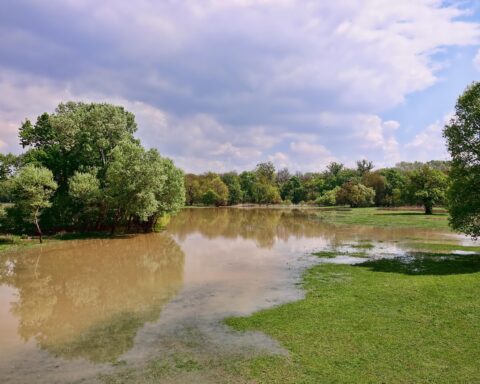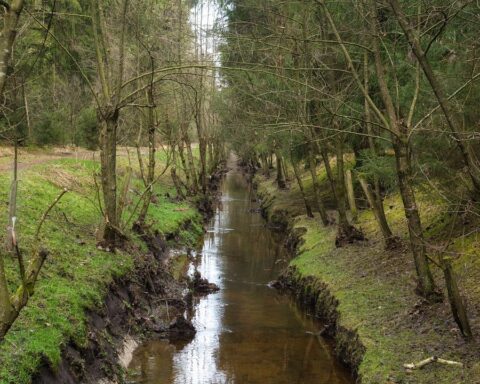The U.S. Department of the Interior (DOI) signed a Memorandum of Understanding (MOU) with three southern Oregon Native American tribes and a local nonprofit to restore the Klamath Basin ecosystem and improve water supply reliability for local agriculture.
The historic conservation agreement solidifies a commitment toward finding long-term solutions for the area’s water challenges. The federal agency announced the agreement along with a pair of initiatives that include $234 million for regional water projects.
“Following months of consultation and discussions, we’re proud to formalize this partnership with Tribes and irrigators and make a shared commitment that will benefit the forests, watersheds, agriculture and abundant populations of migratory bird and fish species that are unique to this Basin,” Secretary of the Interior Deb Haaland said in a release.

The MOU effectively commits the DOI to work across federal agencies, non-governmental partners and the states of Oregon and California to identify Basin restoration goals and secure funding. Goals include improving water and irrigation stability and reliability, strengthening ecosystem resilience, protecting fish populations and advancing drought resilience.
The agreement calls for identifying specific projects that could be initiated within the next one to two years. After short-term restoration projects are identified, the parties will begin identifying long-term projects that could be initiated and completed over the next three to five years.
DOI also unveiled the $162 million Klamath Basin Drought Resilience Keystone Initiative to support a broad spectrum of restoration activities. The initiative will help recover threatened or endangered species, create habitats for fish and birds and “rethink the way water moves across the Klamath Basin to better align agriculture with ecosystem function.” Both the Bipartisan Infrastructure Law (BIL) and Inflation Reduction Act, alongside other federal and state sources, are backing the initiative.
The effort will address the environmental impact of a series of hydroelectric dams built during the first half of the 20th century for food control and power generation. The dams blocked salmon access to much of their historic spawning and rearing habitat, while wetland draining and water pollution reduced the quantity and quality of habitat for birds and fishes.
In addition, DOI announced more than $72 million to restore ecosystems and modernize agricultural infrastructure throughout the Klamath Basin. The U.S. Fish and Wildlife Service (UFWS) will invest $64 million to restore the regional ecosystem and repair local economies. The expenditure will help complete the $10 million Klamath Falls National Fish Hatchery by 2027, support collaborative conservation in the Sprague River watershed and continue implementing Tribally led projects throughout the Basin.
As part of its investment, UFWS will provide $25 million to support co-developed restoration projects in the Klamath Basin. The projects will help resolve ongoing water-related challenges and invest in water stability and restoration efforts.
“Projects will be required to have broad support throughout the Klamath Basin and be linked to the Service’s top priorities for the Klamath Basin,” the UFWS said on its website detailing project awards for the basin.
Strategic Partnerships, Inc. can provide information on contract opportunities, plus existing and future government funding. For more information, contact research@spartnerships.com.










